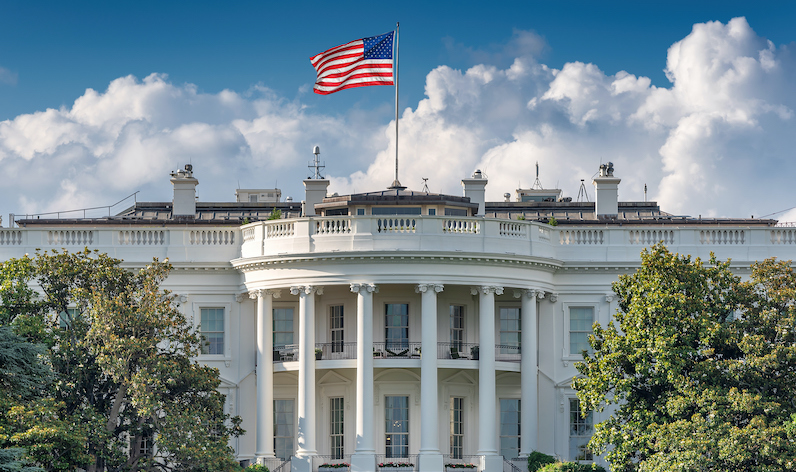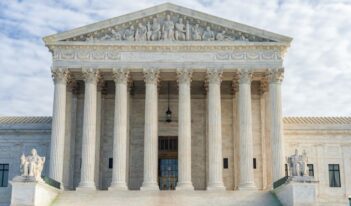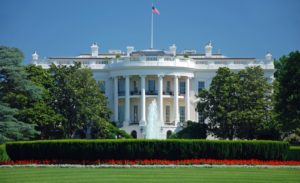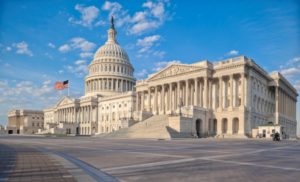
Scholars argue that career officials in the executive branch have significant decision-making power.
How much control should Presidents have over important decision-makers in the executive branch? The U.S. Supreme Court has held that Presidents can remove without cause the heads of federal agencies like the Consumer Financial Protection Bureau and the Federal Housing Finance Agency.
But this presidential power over decision-makers does not reach all corners of the executive branch, according to Brian Feinstein, a professor at The Wharton School of the University of Pennsylvania, and Jennifer Nou, a professor at the University of Chicago Law School.
In a forthcoming article, Feinstein and Nou argue that the executive branch’s political appointees have delegated a significant amount of their authority to career officials. These so-called subdelegations matter, Feinstein and Nou explain, because these career officials wield significant decision-making power and remain in agencies during multiple administrations.
Career officials wielding subdelegated authority can then develop policy expertise without fear of a future presidential administration changing direction, according to Feinstein and Nou.
But Feinstein and Nou also note that these officials might reduce the executive branch’s accountability to the public, since voting to replace a presidential administration does not also replace the officials with this authority.
To identify career officials receiving subdelegated power, Feinstein and Nou studied federal agencies’ subdelegations of authority from 1979 through 2019. These subdelegations are codified in the Code of Federal Regulations, which is “the official daily publication for rules, proposed rules, and notices of Federal agencies and organizations, as well as the executive orders and other presidential documents.”
Feinstein and Nou coded these subdelegations of authority and in each instance they analyzed which officials granted authority, and which officials received authority. They then identified whether the subdelegations of authority involved “political appointees” who take roles under specific presidential administrations, or “civil servants” who remain employed despite a change in presidential administrations.
Feinstein and Nou found that the majority of subdelegations during the 40-year period studied involved political appointees—such as cabinet officials and other officers appointed by the President—delegating their authority to career officials. Ninety-nine percent of delegators were political appointees. Fifty-nine percent of delegates were career officials.
As Feinstein and Nou note, although the number of subdelegations does not necessarily correspond to the scope or significance of such authority, the number of subdelegations may be a useful proxy for the breadth of authority granted.
Feinstein and Nou also discovered a number of trends across these delegations.
First, over the 40-year span, the number of subdelegations to career officials has declined. Feinstein and Nou suggest that this decline in subdelegations exists because, over time, agencies exhaust the authority that they can subdelegate through existing statutes.
Second, Feinstein and Nou note that presidential administrations differ in how much authority they subdelegate. For example, Feinstein and Nou explain that the Reagan Administration issued twice as many subdelegations as the Obama Administration—although that difference could be another function of changes over time.
Third, Feinstein and Nou found that subdelegations, once granted, are rarely reversed. They discovered that delegates receive 33 grants of power for every one revocation of power. The “relative durability” of these subdelegations, Feinstein and Nou suggest, might be attributed to how onerous it is for agencies to reverse course and publish a new rule.
Finally, contributing to the overall number of subdelegations are what Feinstein and Nou call “midnight subdelegations”—subdelegations made in the three months prior to a presidential transition. As they explain, subdelegating authority to career officials could be viewed as the outgoing administration’s way to entrench its policy preferences, because it places power with career officials, rather than with an incoming administration that has a different policy agenda. Feinstein and Nou argue that this practice might also explain why political appointees voluntarily relinquish their power, as the departing administration’s policies can be better safeguarded by career officials.
Feinstein and Nou explain that, for those supportive of increased presidential control, the rise of subdelegations is likely to be concerning. If subdelegations entrench one administration’s policy preferences, even after that administration is no longer in office, this could reduce political accountability and the power of the democratic process. Furthermore, Feinstein and Nou note that presidential administrations have limited resources to identify and then publish a revocation of a previous subdelegation, which means such discretion often remains with career officials.
For those who are concerned about presidential interference in policymaking, Feinstein and Nou argue that subdelegation can be a “welcome tool.” They note that delegation “can encourage civil servants to develop expertise” which may help promote neutrality in agency decision-making.
Feinstein and Nou propose that to address these tradeoffs between political accountability and agency expertise raised by subdelegations, both the legislative and executive branches should implement review processes that evaluate the costs and benefits of every subdelegation made. Such reviews of these subdelegations would be a step toward establishing the proper roles for agency officials within the executive branch, Feinstein and Nou argue.



